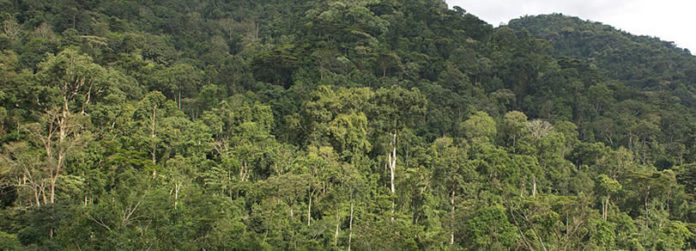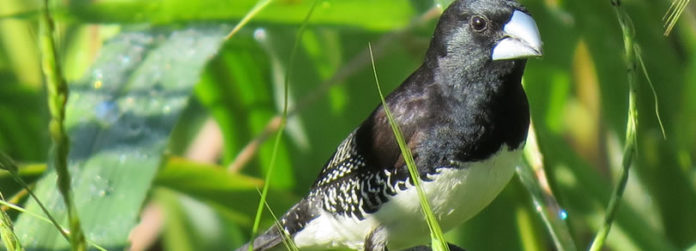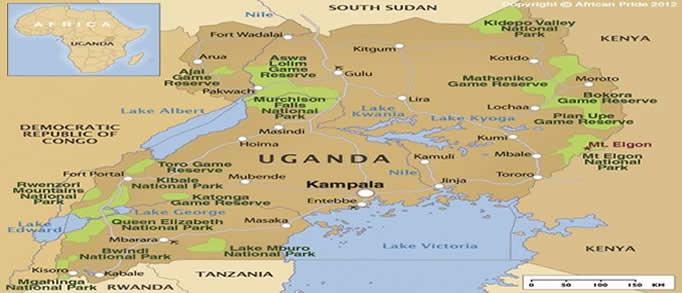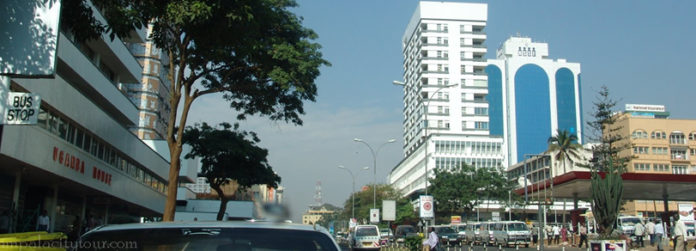Found in Eastern Uganda near Mbale and lying across the Uganda-Kenya boarder, Mount Elgon National Park is covers 1,145 square kilometers. The is known to be the fourth highest mountain in East Africa and second in having the topmost peak in Uganda, towering up to 4321 meters.
An extinct volcano, Mt. Elgon is said to have stood taller than Mountain Kilimanjaro of today during the ancient times. Mount Elgon is beleived to have first erupted more than 24 million years ago. Locally known as Mt. Masaba, Elgon has got three other major peaks which are Kiongo (4303m), Mubiyi (4210m) and Jackson’s summit (4165m). Masaba is the name of the founding ancestor of the Bagisu assumed to have emerged from a cave on its slopes several centuries ago. Masaba’s spirit is believed to be embodied by Jackson’s Summit but may be the taller Kiongo peak.
The mountain is also an important watershed for different rivers including River Sipi that forms the splendid Sipi falls. The mountain slopes support an affluent range of vegetation zones like the montane forest, high open moorland covered by the mature giant lobelia and groundsel plants. The mountain has crater covering about 40kilometres on its top surrounded by a several rocky peaks. Mt. Elgon Park has a large collection of fauna and flora species, for example the Bamboo, heath and moorland zones plus animals such as leopards, Blue and White Colobus monkey, hyena and buffalos. The bird species comprise of the African Goshawk, Mackinon’s Fiscal, the Bablafecht weaver and many others.
Activities:
Bird watching, mountain climbing, trekking, day hikes, forest exploration and camping are among the major activities. A selection of attractions outside the park like lodging facilities and campsites in addition to the splendid Sipi falls placed 66 km from Mbale makes a trip pleasant. Community visits and participation in Imbalu dances, scenery walks from Budadiri trailhead can also be made.
1. Flora and Fauna
As you travel up along Elgon’s slopes, you will go through the chunky montane forest with mixed bamboo belts intensely characterized by a number of bird species. You will then join attractive moorland zones with several interesting endemic plant species like the Giant lobelia and groundsels. Lovers of the natural world will spot primates such as the Black and White Colobus Monkey, Blue Monkey, uncountable captivating bird species like Golden Winged and Tacazze sunbirds, Ross’s and Hartlaubs Turacos, Black and White Casqued and Crowned Hornbills. The defenseless Lammergeier and the Jackson’s Francolin found nowhere in Uganda apart from here will be seen. With a wholehearted watching, you will be able to see buffalo, elusive leopard, duiker and the shy hyena. Attractive to see as well are the forest monkeys that fill up the forest top as the gigantic forest Hog, Bushbuck, Antelope, Civet, Wildcat, Bush Duiker, Jackal, Rock Hyrax and Elephant move around the tropical rain woodland.
2. Birding
Chubb’s Cisticola, African Goshawk, White-chinned Prinia, African Blue Fly-catchers, Chin-spot Batis, Mackinon’s Fiscal, Doherty’s and Luhder’s Bush-Shrikes and Baglafecht Weaver are seen at the forest and thick scrub alongside the Chebonet River close to the camp.
3. Trekking in the Routes
The area has two key opening points that show the way to the Elgon peaks.
– Salsa Trail Buddukiro trailhead, this is mainly reachable easily from Mbale and a direct route to the peaks going via the Park’s largest area of bamboo wooded area. But is also a steep and rough ascend of about 1600metres on the opening day.
– Pisa trail/Kapkwata trailhead, a calm climb can cover up 660metres on the first day deciding to climb through here. As you move on this route, you can see the sights of the vast Podocarpus forest, an admirable place for flora and fauna watching. An entire trekking journey to the mountain peaks runs for 4-5 days. It is worthwhile that visitors talk about the trekking options with the information clerks at the Mbale, Budadiri or Kapkwata Visitors’ Centres.
4. Safari Activities
Hiking is the most important tourism activity. Mountain climbing is not so much tedious implying, it can be done by an average and experienced hikers. In addition to the interesting and distinctive plants and animals, one can experience the splendid waterfalls, big caves, beautiful peaks and gorges and the spectacular hot springs which boil up at 48′C. The perfect trip periods are the dry seasons, say from June-August and December-March. But still even during cold months, trekking is practicable and gratifying. Precisely, with or with no mountaineering skills, one can trek to all major peaks with no difficulty.
5. What to come along on the tour.
Come along with tent, sleeping bag, warm clothes, gloves, hat, powerful hiking shoes, flashlight cameras, water bottle, rain gear, first aid kit, food preparation tools and sufficient foodstuffs.
6. Mt. Elgon Camping.
There are 9 campsites placed at different points along the trekking route. It is wise that visitors abide by park rules by staging camps only at gazetted sites. No camping is acceptable in the caldera. The mountain’s camping is ancient and traditional requiring all the important camping tools to be carried by the tourist. But things like tents and sleeping bags are readily offered for hire at the park. Bring a warm jacket and rain gear for unpredictable weather conditions at the mountain for the period of the expedition. A fuel- camp stove is also essential for use to keep away from abusing the firewood of the natural environment.
7. Park Rangers and Porters
Benignly make use of a trained park ranger to direct you on the whole trekking journey since rangers are well-acquainted with the routes, safety measures, communication and cultural histories of all the places hiked. Local porters will be of help in carrying up to 18kilogrammes of your stuff, prepare meals, setting up and removing your camp plus bringing water for use. There are fees for the guide and the porter per stage. The wages cover the guide or porter’s park visitation fee and the cost of adequate food and supplies. Trained ranger guides and local porters are available at all trailheads. Please ask for a guide’s license before hiring to ensure you are dealing with the genuine personality. As an affair of safety, a ranger escort should be hired while visiting the calderas or mounting the peaks. You will meet your ranger guide at Sasa or Piswa patrol hut where you have got to present your park receipt prior to moving forward upwards.
8. Mt. Elgon Day Hikes.
On Mt. Elgon, the Forest Exploration Centre has 3-day trails covering about 3 to 7 kilometres. The trails award a pleasurable experience of the Elgon’s unusual flora and fauna. To get to the huge Tutum Cave, 11 km from the centre, you are facilitated by the fourth trail. The trail goes all the way through a range of vegetation types rendering clear pictures for wildlife such as Black and White Colobus Monkeys and a selection of birds.
9. Attractions outside Mt. Elgon National Park
The spectacular Sipi Falls are found 66 km from Mbale, en-route to the Forest Exploration Centre and Kapkwata. Numerous local trails make day hikes possible through welcoming local villages with stunning farming. Pleasant campsites, lodge facilities, including meal services and hot showers are offered at Crow’s Nest located near the Sipi trading centre. More comfortable accommodation is at the Sipi Falls Resort. Better get a guide to take you steadily through the one and half hour walk to the Forest Exploration Centre. Nagudi rock has 7 open rock-climbing routes, half-way between Mbale and Budadiri. Mountaineers need to carry their own mountain climbing tools because these routes are bolt.
ACCOMMODATION
Easy accommodation facilities are on hand inside the Park at the Kapkwata Rest House and the Forest Exploration Centre at Kapkwai. Prior arrangements through the Mount Elgon National Park Visitors’ office in Mbale are necessary as these facilities do not provide accommodation for large numbers of visitors. Cookery services are offered, but visitors should bring their own food supplies or have money to buy food upon arrival. The Forest Exploration Centre also carries out a four-day environmental program for school groups of up to 30 students which allow children to experience a living forest environment while learning the importance of environmental conservation. There is a dormitory -form rooms and bathing facilities with running water. There is also an up-market lodge at Sipi Falls, Midrange hotels in Mbale plus budget lodging at Sipi Falls, Mbale and Budadiri.
HOW TO GET THERE.
Mount Elgon national park is 235 kilometers from Kampala to the eastern side of Uganda. Driving to the mountain takes you through Mukono, Buikwe, Jinja, Iganga, Bugiri, Palisa to Mbale town at the western stand of the Mount, before climbing to Kapchorwa on the north-western bloc of Mount Elgon. Murram roads show the way off the Mbale Kapchorwa road to get to the various trailheads. In Mbale town, Mount Elgon National Park Information Office is on Plot 19/21 Masaba Road, near Mount Elgon Hotel. This office which is open from 08.00-13:00 and 14, 00-17, 00, Mon-Fri and 09.00-13.00 on Saturdays is available to give you as much as necessary information concerning the park.
IDEAL TIME TO VISIT MOUNT ELGON:
Mount Elgon lower slopes are fine and ideal for visiting throughout the year. And the drier months from June to August, then December to March constitute the most outstanding periods for climbing the mountain.

















